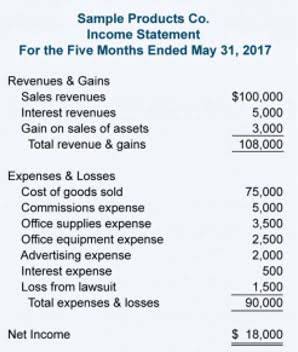
When this happens, the business debits its accounts payable for the remaining amount and credits its notes payable entries with the same. In this way, an accounts payable entry is successfully converted into a notes payable entry. Supplier management thus becomes essential as the volume of accounts payable transactions grows. One way of managing suppliers is to use no-code platforms to design management software with custom requirements.

Balance sheet reporting
Accounts payable is short-term trade credit owed to suppliers for goods or services, typically interest-free. Notes payable is a formal loan agreement with structured repayment terms and often includes interest. A business will issue a note payable if for example, it wants to obtain a loan from a lender or to extend its payment terms on an overdue account with a supplier. In the first instance the note payable is issued in return for cash, in the second they are issued in return for what is the difference between notes payable and accounts payable cancelling an accounts payable balance.

Require accurate record-keeping
- A business has a network of suppliers and vendors that it deals with for services and goods.
- Missing due dates incurs unnecessary interest and late fees that eat into your margins.
- In addition to delaying invoice receipt, this increases the likelihood of losing an invoice or processing a duplicate.
- That’s where automated document matching becomes a valuable tool for account payable.
- This guide explains the meaning, key differences, and examples of notes payable vs accounts payable to help your accounting team manage them effectively.
- Accounts Payable covers a broader range of expenses, including operational costs like services, rent, and software subscriptions.
It allows your accounting team to manage cash flow strategically, making sure you have the resources to invest while spreading payments over time. Notes payable refers to a formal, written agreement in which your business borrows money from a lender and commits to repaying it later, usually with interest. Companies short on cash may issue promissory notes to vendors, banks, or other financial institutions to acquire assets or borrow funds. Notes payable is a liability account maintained in a company’s general ledger that tracks its promises to pay specific amounts of money within a predetermined period. Rather than creating a formal contract to cover the debt, both parties typically just come to a verbal agreement. Debts marked under accounts payable must be repaid within a given time period, usually under a year, to avoid default.
- Instead of matching to the PO, the match is to the contract, and the amount of the contract is automatically debited to keep an accurate account of the budget.
- Notes due within the next 12 months are considered to be current or short-term liabilities, while notes due after one year are long-term or non-current liabilities.
- In summary, accounts payable and notes payable are essential aspects of a company’s financial management, but they serve different purposes.
- In large companies, managing accounts payable goes beyond just paying invoices.
- The drawee may either hold the note till maturity or may choose to discount it earlier in which case the note receivable is endorsed in favor of another party who then becomes the holder or payee.
- Financial stability hinges on the proper handling of both accounts payable vs. notes payable.
Invoice Matching
These are the short term liabilities that the company needs to pay to its suppliers in a smaller span of time. At their core, accounts payable and notes payable are obligations a business owes to external parties. They signify debts incurred due to transactions or borrowings, and their effective management is crucial for maintaining a healthy financial position. However, it should be noted that the current portion of a long term note payable is classified as a current liability. Many people use the terms AP and NP interchangeably, but there are some stark differences between the two. Accounts payable refers only to short-term liabilities, but notes payable can represent either short-term or long-term liabilities and is contingent upon due dates and terms summarized within the note.
- Depending on the loan terms, notes payable may require collateral (such as equipment or assets).
- A smooth accounts payable process helps organizations keep track of invoices, avoid late payments and fees, and fulfill their short term obligations.
- Sellers extend credit period to their customers, allowing them a specified time period to make payment for their purchases.
- The full amount to be paid, broken up into the principal and interest amounts, is explicitly communicated (typically on an amortization schedule).
- It is a current liability account that usually has a credit balance and represents amounts due to suppliers and vendors.
- You may have to juggle payments in different currencies and multiple payment methods such as US and global ACH (Automated Clearing House), PayPal, wires, paper checks, or prepaid cards.
- Accounts receivable and accounts payable are both line items on a company’s balance sheet.
In terms of Types and Scope
An account payable is essentially an extension of credit from the supplier to the manufacturer. It allows the company to generate revenue from supplies or inventory so the supplier can be paid. This includes manufacturers that buy supplies or inventory from suppliers that extend the terms for the payment.

Manage vendor contracts

These obligations generally have shorter payment terms, usually within 30 to 90 days.Terms can be longer for large ticket items, custom products or on export transactions. The above chart on the differences are identified based on some important criterias like amount, time period, convertibility, uses and source or origin. These explanations will help the learner identify both the liabilities efficiently and treat them in the books of accounts accordingly. As per terms of the purchase, ABC Inc. draws a bill of exchange for the amount of $40,000, payable after 2 months on XYZ Inc. Ensuring that all spend for a particular project obliges to the contracts is crucial and that any uncontracted spend should be dealt with accordingly. Under the accrual accounting method, an accrual occurs when a company’s good or service is delivered cash flow prior to receiving payment, or when a company receives a good or service prior to paying for it.

Therefore, Current liabilities like notes and accounts payables need to be managed for efficient working capital management. Businesses need to employ specific processes to successfully manage their current obligations to succeed in the long run. Trade transactions in commercial entities, especially those of high volume and high value, often take place on credit basis. Sellers extend credit period to their customers, allowing them a specified time period to make payment for their purchases. When customers are unable to clear their dues within the credit period, they Bookkeeping for Chiropractors may often request the seller to accept promissory notes as a surety for subsequent payment.